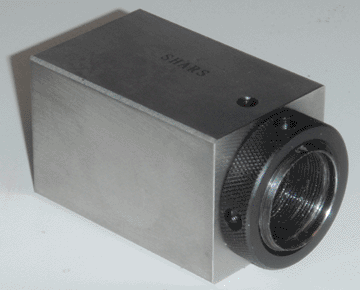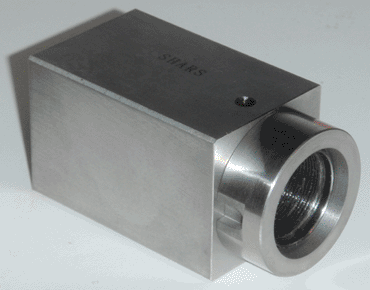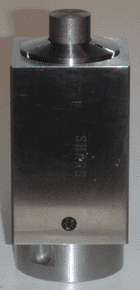


While a spin indexer is useful for milling features (such as gear teeth) at precise angles, it has the limitation that it is generally only suited to being mounted horizontally, where the axis of the workpiece is parallel to the plane of the table. For machining simple objects in multiple orientations, a collet block is a useful alternative. Having already purchased a set of 5C collets to use in my spin indexer, I decided to buy a matching set of 5C collet blocks as well. These are common and relatively inexpensive, but unfortunately all have the same design flaw: they lack a precise surface to stand upright on. The collet is pulled through the block by a coarse threaded ring, and the back end of the collet itself is generally thin and imprecise. To resolve this issue and make the collet block more versatile, I made a thicker ring, the faces of which are parallel to the highest degree of precision I could achieve. This ring is long enough to extend beyond the rough end of the collet, allowing the block to sit vertically in a vise. A comparison of the original and improved rings can be seen at the top of the page.
The ring itself is made from a 1-7/8" rod of gray cast iron from Speedy Metals, which I purchased a number of years ago. It is easy to cut, but hard enough to be used as a long-lasting precision surface. The finished ring is exactly 5/8" thick and 1-11/16" in diameter, and has an internal 1-1/4"-20 thread, which I cut with a purpose-built boring bar. The faces were repeatedly adjusted with my shear tool until the side-to-side taper was within 0.001". I then milled two slots for a spanner wrench, and lapped the faces with up to 2000-grit sandpaper on plate glass to achieve a smooth, rust-resistant surface.
This minor improvement greatly increases the versatility of the set of collet blocks, allowing both vertical and horizontal operations on the same workpiece without the need to re-indicate between steps. A part can be flipped to any available side of a block and clamped in place, and is guaranteed to be accurately positioned to within 0.001". A test with a dial indicator confirmed this, showing no measurable error when swept vertically along the side of a block mounted on end. This piece of equipment will likely see significant use in upcoming projects, as I begin to experiment with geared mechanisms.